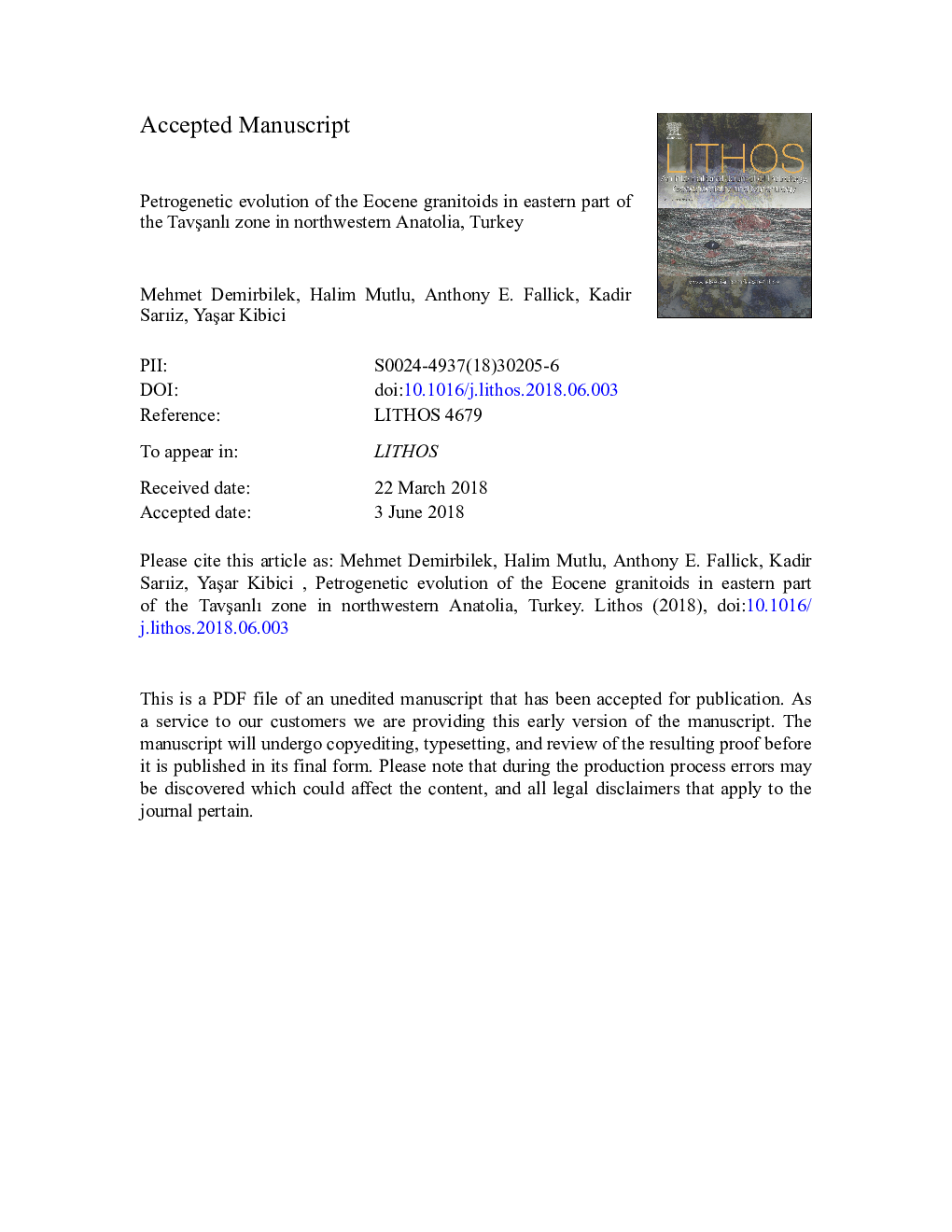| کد مقاله | کد نشریه | سال انتشار | مقاله انگلیسی | نسخه تمام متن |
|---|---|---|---|---|
| 8911534 | 1638617 | 2018 | 67 صفحه PDF | دانلود رایگان |
عنوان انگلیسی مقاله ISI
Petrogenetic evolution of the Eocene granitoids in eastern part of the TavÅanlı Zone in northwestern Anatolia, Turkey
دانلود مقاله + سفارش ترجمه
دانلود مقاله ISI انگلیسی
رایگان برای ایرانیان
کلمات کلیدی
موضوعات مرتبط
مهندسی و علوم پایه
علوم زمین و سیارات
ژئوشیمی و پترولوژی
پیش نمایش صفحه اول مقاله

چکیده انگلیسی
The TavÅanlı Zone in northwestern Turkey is characterized by Eocene granitoids forming a WNW-ESE trending belt. These intrusives are of medium to high-K, calc-alkaline, metaluminous, I-type and post-collisional character. Their compositions vary from granite, granodiorite, monzonite/quartz monzonite to quartz monzodiorite. The majority of plutons are cut by dykes with a variety of composition from aplite and pegmatite to diabase. REE patterns and trace element compositions of granitoids show similar trends-enrichment in LILE and depletion in HFSE with respect to primitive mantle-and imply generation from magmas characteristic of subduction-related or syn-collisional settings. 87Sr/86Sr (0.705554 to 0.714863) and 143Nd/144Nd (0.512266 to 0.512714) values of intrusives and dykes encompass a wide range. They are consistent with the array reported for granitoids in the western realm of TavÅanlı Zone but are represented by less radiogenic Sr isotope and more radiogenic Nd isotope compositions relative to most central Anatolian granitoids. Oxygen isotope compositions of various minerals from the granitoids vary in a broad range from to 4.0 to 13â° and are conformable with the range proposed for unaltered granites. Mineral-separate δ18O values from dykes are between 4.1 and 10.9â° and generally fall in the range obtained for granitoids. K-Ar cooling ages of mineral separates from the intrusives are 51.2 to 59.3â¯Ma for hornblende, 47.6 to 52.5â¯Ma for biotite and 45.3 to 54.0â¯Ma for feldspar. Geochronological results on eastern part of the TavÅanlı Zone agree well with those obtained for the western section of the Zone (43.0 to 57.9â¯Ma). The uplift rate of studied granitoids is found 1â¯mm/year, which is consistent with the rate proposed for western Anatolian granitoids. Geochemical data combined with radiometric data imply that melt generation with multiple source lithologies was initiated soon after the subduction waned. The heat necessary to start partial melting was probably due to lithospheric delamination or convective thinning of continental lithosphere.
ناشر
Database: Elsevier - ScienceDirect (ساینس دایرکت)
Journal: Lithos - Volumes 314â315, August 2018, Pages 236-259
Journal: Lithos - Volumes 314â315, August 2018, Pages 236-259
نویسندگان
Mehmet Demirbilek, Halim Mutlu, Anthony E. Fallick, Kadir Sarıiz, YaÅar Kibici,